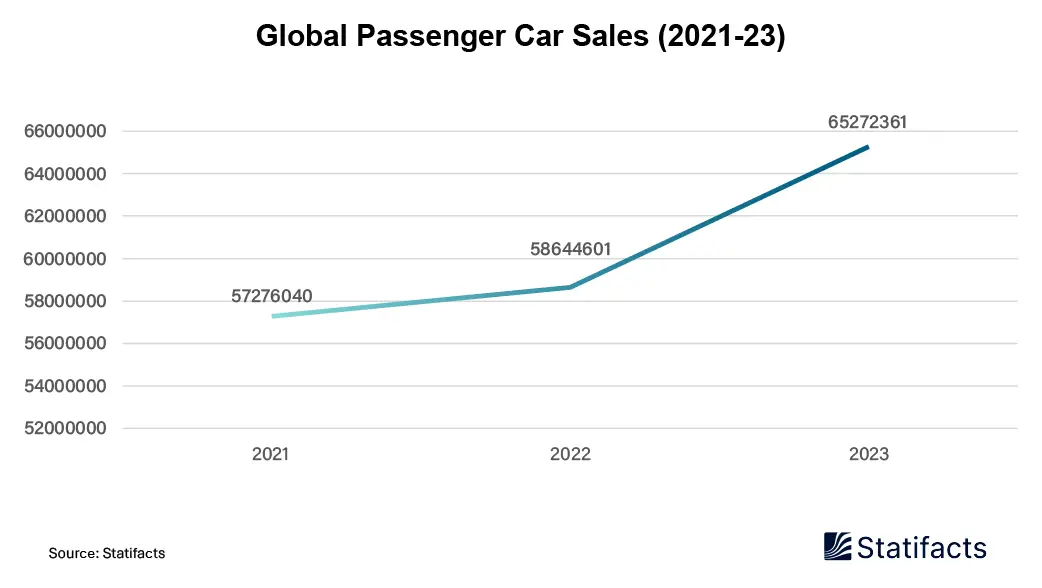
November, 2024

According to the International Organization of Motor Vehicle Manufacturers, 57,276,040 passenger vehicles were sold globally in 2021. The number went up to 65,272,461 in 2023. This global rise in car sales created a ripple effect through the industries that feed into it, especially with essential components such as engine parts. As a result, the automotive catalytic converter market also continues to grow.
The market deals with the manufacturing and distribution of catalytic converters for several automotive companies worldwide. This industry's products consist of two-way oxidation, three-way oxidation-reduction, and diesel oxidation catalysts. Rising government initiatives to curb environmental emissions have boosted the market's growth. In March 2024, the U.S. government announced the final national pollution standards for light-duty trucks, passenger cars, and medium-duty vehicles for model years 2027 and 2032.
This market is generally driven by the rising sales of passenger vehicles worldwide. Also, the growing developments related to protecting catalytic converters are expected to boost the growth of the automotive catalytic converter market.
The advancement in non-novel catalysts and the ongoing developments in nanotechnology are expected to create ample growth opportunities for the market players in the upcoming days. In January 2023, Fortegra launched a catalytic converter theft deterrent, which provides security to automotive consumers.
This market comprises several players, such as Faurecia, Magneti Marelli, BASF Catalysts, Eberspaecher, and Tenneco. Faurecia is a leading company in this industry that generated an overall revenue of US$29,452.09 million in 2023. BASF Catalyst is another major brand in this market, with a revenue of US$96 million in 2023 from the surface technologies segment in India.

There are many variations of passages of Lorem Ipsum available, but the majority have suffered alteration in some form
URL TO BE USED AS REFERENCE LINK:
Placeholder content for this accordion, which is intended to demonstrate the .accordion-flush class. This is the first item's
accordion body.
Placeholder content for this accordion, which is intended to demonstrate the .accordion-flush class. This is the second item's
accordion body. Let's imagine this being filled with some actual content.
Placeholder content for this accordion, which is intended to demonstrate the .accordion-flush class. This is the third
item's accordion body. Nothing more exciting happening here in terms of content, but just filling up the space to make it look, at least at
first glance, a bit more representative of how this would look in a real-world application.
Do you still any question?
Feel free to contact us anytime using our contact form or visit our FAQ page.
Your contact to the Infographics Newsroom
